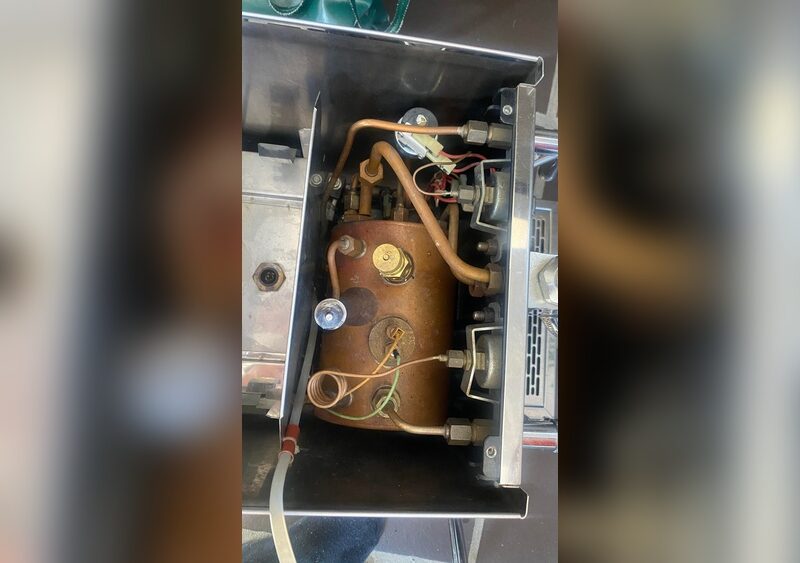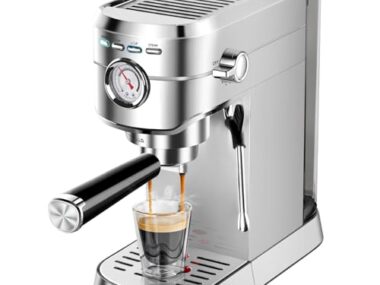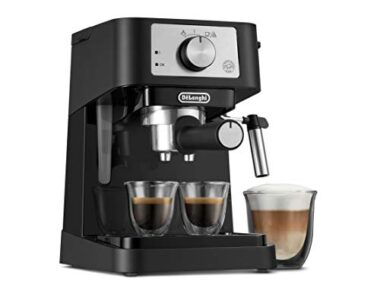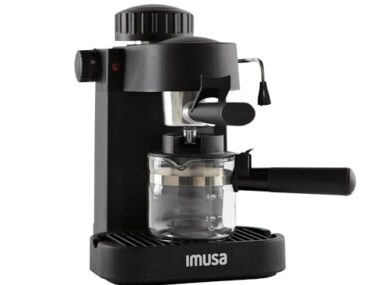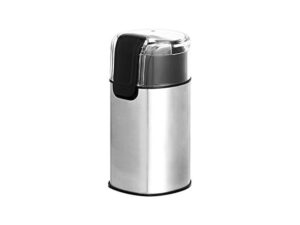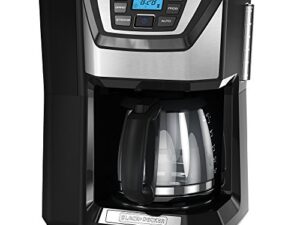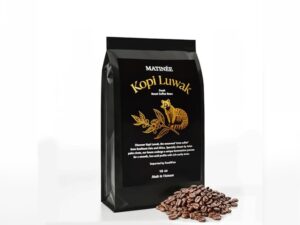Are you struggling with weak espresso shots that just don’t have the right pressure? If your espresso machine isn’t building up enough force, your coffee can taste flat and underwhelming.
But don’t worry—you can fix this! By tuning a few simple things like your grind size, tamping technique, and machine maintenance, you’ll unlock richer, bolder espresso with the perfect crema. Keep reading, and you’ll learn exactly how to increase the pressure on your espresso machine step-by-step, so every cup you make tastes like it was brewed by a pro.
Common Causes Of Low Pressure
Low pressure in an espresso machine can ruin your coffee experience. Several common factors affect the pressure during brewing. Knowing these helps you fix the problem quickly and improve your espresso quality. Below, we explore key causes of low pressure and how they influence your shot.
Grind Size Effects
The grind size controls water flow through the coffee. Too coarse a grind lets water pass quickly. This reduces pressure and weakens flavor. A finer grind creates more resistance. This raises pressure and extracts more taste. Adjust your grinder to a finer setting for better pressure.
Coffee Dose Impact
The amount of coffee in the portafilter affects pressure. Too little coffee causes fast water flow and low pressure. Using enough coffee creates a tight puck. This increases resistance and builds pressure. Weigh your dose carefully to ensure consistent pressure in every shot.
Tamping Importance
Tamping compresses coffee grounds to form a solid puck. Light tamping allows water to flow too fast. This lowers pressure and results in weak espresso. Firm and even tamping increases resistance. It helps maintain stable pressure during extraction. Use consistent pressure for best results.
Coffee Freshness Role
Fresh coffee beans contain oils that affect pressure and extraction. Stale coffee loses these oils and becomes dry. This causes uneven water flow and low pressure. Always use freshly roasted beans for a better crema and proper pressure. Store beans in a cool, airtight container.
Adjusting Your Grind Settings
Adjusting your grind settings plays a key role in increasing espresso machine pressure. The grind size controls how fast water flows through coffee. A finer grind creates more resistance, raising pressure during extraction. Too coarse a grind lets water pass too quickly, lowering pressure and taste quality. Finding the right grind balance improves espresso flavor and machine performance.
Choosing Finer Grinds
Finer coffee grinds slow water flow and build pressure. This helps the espresso machine reach the ideal 9-bar pressure. Use a burr grinder for consistent, fine grounds. Adjust grind settings little by little to avoid over-extraction. Watch for slow dripping or bitter taste, signs of too fine grind. Aim for a smooth, even extraction with good crema.
Avoiding Overly Coarse Grounds
Coarse grounds let water flow too fast. This reduces pressure and weakens espresso taste. Avoid using coarse settings like those for French press. Coarse grounds cause under-extraction and watery coffee. Check your grind size regularly to maintain proper pressure. Consistent medium-fine grind keeps pressure steady and espresso rich.
Optimizing Coffee Dose And Tamping
Optimizing the coffee dose and tamping plays a key role in increasing espresso machine pressure. These steps create the right resistance for water to flow through the coffee grounds. Proper dosing and tamping improve extraction and enhance espresso flavor. A consistent method ensures stable pressure during brewing.
Measuring Correct Coffee Amount
Start by measuring the right coffee dose for your portafilter. Most machines work best with 18 to 20 grams of ground coffee. Use a digital scale to get an accurate amount every time. Too little coffee causes low pressure and weak espresso. Too much coffee can block water flow and cause over-extraction.
Adjust the dose based on taste and pressure readings. Keep the dose consistent for better results. Freshly ground coffee provides better resistance and pressure.
Tamping Techniques For Pressure
Tamping compresses the coffee grounds to create even resistance. Use a tamper that fits your portafilter well. Apply firm, even pressure around 30 pounds. Press straight down to avoid channeling water through weak spots.
Check the coffee surface after tamping. It should be smooth and level. Uneven tamping causes pressure loss and uneven extraction. Practice tamping to develop consistent pressure and improve espresso quality.

Credit: www.reddit.com
Maintaining Your Espresso Machine
Maintaining your espresso machine is key to improving pressure and brewing quality. Regular care helps prevent clogs and wear that reduce pressure. Clean parts work better and last longer.
Follow simple steps to keep your machine in top shape. Focus on cleaning and descaling to remove dirt and mineral build-up. These tasks improve water flow and pressure consistency.
Cleaning Portafilter And Shower Screen
Remove the portafilter and rinse it with warm water. Use a brush to clean coffee grounds from the filter basket. The shower screen, inside the group head, can get clogged. Scrub the shower screen gently to clear blockages. Clean parts allow water to pass freely, raising pressure during extraction.
Descaling To Remove Mineral Build-up
Mineral deposits from hard water can block pipes and valves. Use a descaling solution made for espresso machines. Follow the product instructions carefully. Run the descaler through the machine’s water system. This removes scale and restores proper water flow. Descaling every 1-3 months keeps pressure steady and prevents damage.
Checking Internal Components
Checking the internal components of your espresso machine is key to solving low pressure issues. Over time, parts inside the machine can wear out or become blocked. These problems reduce water flow and pressure. Regular inspection helps catch issues early. It also ensures your machine works at its best. Focus on the pump and water lines first. These are the most common causes of pressure drops.
Inspecting The Pump Condition
The pump pushes water through the coffee grounds. If it weakens, pressure falls. Listen for unusual sounds like buzzing or grinding. These may indicate pump wear or damage. Turn off and unplug the machine before inspection. Check for leaks or cracks around the pump. Tighten loose connections carefully. Pumps that show signs of wear often need replacement. A healthy pump keeps pressure steady and strong.
Identifying Water Line Blockages
Water lines carry water from the reservoir to the group head. Blockages reduce water flow and pressure. Mineral buildup or coffee residue can clog these lines. Detach water lines if possible. Look inside for any deposits or debris. Clean lines with a brush or soak in vinegar solution. Flush the system with clean water afterward. Clear water lines help maintain consistent pressure during brewing.
Recognizing Low Pressure Symptoms
Low pressure in an espresso machine affects the quality of your coffee. Knowing the signs helps you fix the problem early. Watch for changes in the coffee’s flow and appearance. These symptoms show pressure issues that need attention.
Texture And Crema Issues
Espresso with low pressure often has thin, watery texture. The crema, the golden layer on top, looks pale or absent. A rich, thick crema means good pressure. If crema is weak or missing, pressure might be too low. The espresso shot may also drip slowly or unevenly. This affects the overall mouthfeel and enjoyment.
Taste Problems Linked To Pressure
Low pressure causes under-extraction of coffee flavors. The espresso tastes sour, sharp, or weak. Bitter notes may also appear if the pressure is inconsistent. Balanced and rich flavors need proper pressure during brewing. If your espresso lacks body and taste, check the pressure first. Correcting pressure improves flavor and aroma significantly.
Expert Tips For Pressure Improvement
Increasing the pressure on your espresso machine can greatly enhance your coffee’s flavor and crema. Pressure plays a key role in extracting the best taste from your coffee grounds. Here are expert tips to help you improve pressure effectively. These steps focus on maintaining your machine and adjusting settings based on your coffee type.
Routine Machine Care
Regular cleaning keeps your espresso machine working well. Remove coffee oils and residue from the group head and portafilter. Use a brush to clear the grinder and remove old coffee grounds. Descale the machine to prevent mineral build-up that blocks water flow. Check seals and gaskets for wear and replace them if needed. A well-maintained machine maintains steady pressure during extraction.
Adjustments Based On Coffee Type
Different coffee beans and roasts require different pressure settings. Darker roasts often need lower pressure for smooth extraction. Lighter roasts may require higher pressure to bring out their flavors. Grind size affects pressure too. Finer grinds increase resistance and pressure. Coarser grinds reduce pressure. Adjust your grind and tamping pressure according to the coffee type. This helps achieve consistent pressure and a balanced shot.
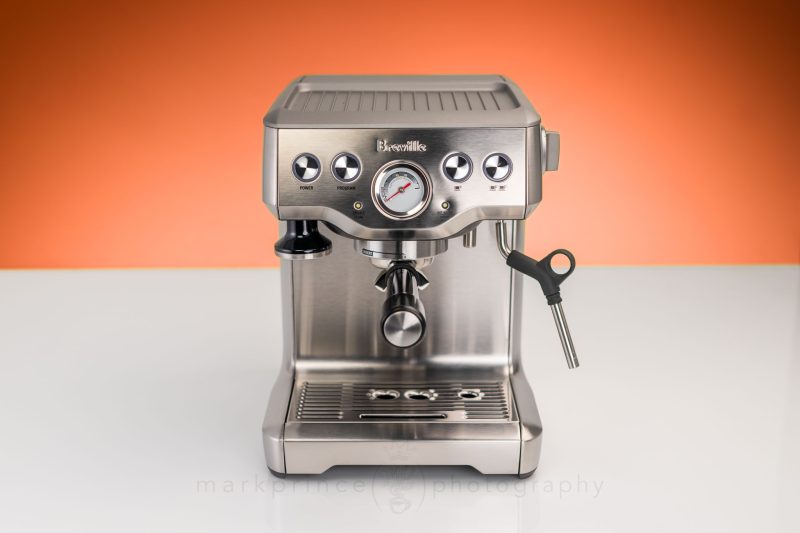
Credit: coffeegeek.com

Credit: www.reddit.com
Frequently Asked Questions
Why Is My Espresso Machine Not Getting Enough Pressure?
Low pressure in your espresso machine often results from coarse grind, insufficient tamping, or stale coffee. Clean the machine and descale regularly. Check the pump and water lines for clogs or wear. Adjust grind finer, use fresh coffee, and tamp firmly to improve pressure.
What Does 15 Bar Or 20 Bar Mean In An Espresso Machine?
15 bar or 20 bar in an espresso machine indicates the maximum pressure the pump generates. Higher pressure extracts coffee oils and flavors efficiently. Most machines operate optimally at 9 bar during brewing. Bar rating affects extraction quality, crema formation, and overall espresso taste.
What To Do If Your Coffee Doesn’t Get A High Pressure?
Adjust grind to finer settings and use fresh coffee. Tamp grounds firmly and clean portafilter. Descale machine regularly and check pump condition.
What Is The 2 1 Rule For Espresso?
The 2:1 rule for espresso means using twice the liquid espresso volume compared to the dry coffee weight. For example, 20g coffee yields 40g espresso. This ratio balances flavor strength and extraction, creating a well-rounded espresso shot.
Conclusion
Increasing espresso machine pressure takes patience and small adjustments. Start by grinding coffee finer and tamping firmly. Use fresh coffee beans and check your coffee dose. Clean your machine regularly to avoid blockages. Inspect the pump and water lines for issues.
Keep testing and tweaking until pressure improves. A steady pressure makes better espresso shots. Enjoy brewing with confidence and care.
